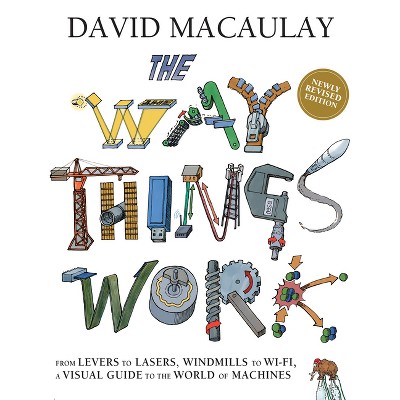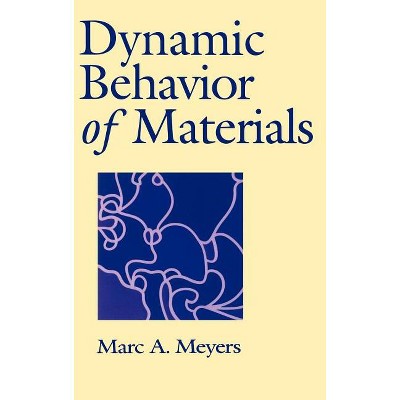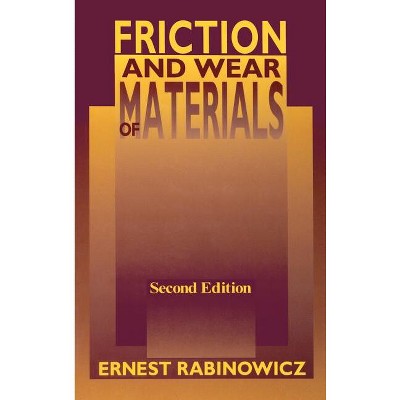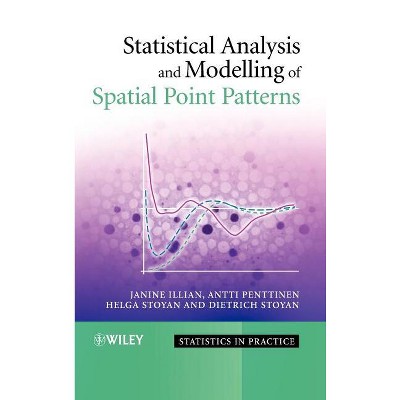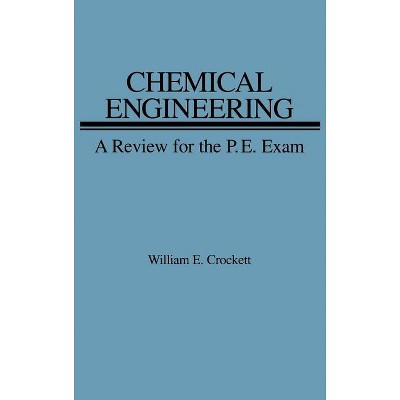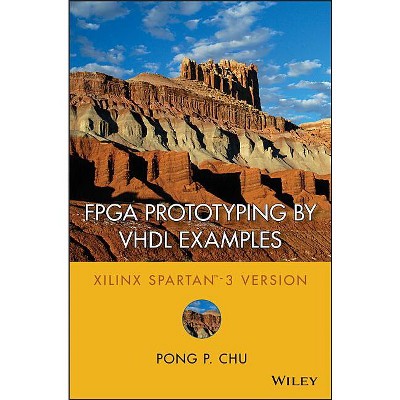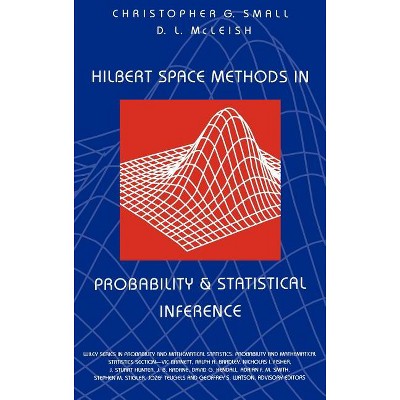Sponsored

Fracture Mechanics of Concrete - by Surendra P Shah & Stuart E Swartz & Chengsheng Ouyang (Hardcover)
In Stock
Sponsored
About this item
Highlights
- FRACTURE MECHANICS OF CONCRETE AND ROCK This book offers engineers a unique opportunity to learn, frominternationally recognized leaders in their field, about the latesttheoretical advances in fracture mechanics in concrete, reinforcedconcrete structures, and rock.
- About the Author: SURENDRA P. SHAH received his PhD from Cornell University.
- 588 Pages
- Technology, Materials Science
Description
Book Synopsis
FRACTURE MECHANICS OF CONCRETE AND ROCK This book offers engineers a unique opportunity to learn, frominternationally recognized leaders in their field, about the latesttheoretical advances in fracture mechanics in concrete, reinforcedconcrete structures, and rock. At the same time, it functions as asuperb, graduate-level introduction to fracture mechanics conceptsand analytical techniques. Reviews, in depth, the basic theory behind fracture mechanics* Covers the application of fracture mechanics to compressionfailure, creep, fatigue, torsion, and other advanced topics
* Extremely well researched, applies experimental evidence ofdamage to a wide range of design cases
* Supplies all relevant formulas for stress intensity
* Covers state-of-the-art linear elastic fracture mechanics (LEFM)techniques for analyzing deformations and cracking
* Describes nonlinear fracture mechanics (NLFM) and the latestRILEM modeling techniques for testing nonlinear quasi-brittlematerials
* And much more Over the past few years, researchers employing techniques borrowedfrom fracture mechanics have made many groundbreaking discoveriesconcerning the causes and effects of cracking, damage, andfractures of plain and reinforced concrete structures and rock.This, in turn, has resulted in the further development andrefinement of fracture mechanics concepts and tools. Yet, despitethe field's growth and the growing conviction that fracturemechanics is indispensable to an understanding of material andstructural failure, there continues to be a surprising shortage oftextbooks and professional references on the subject. Written by two of the foremost names in the field, FractureMechanics of Concrete fills that gap. The most comprehensive bookever written on the subject, it consolidates the latest theoreticalresearch from around the world in a single reference that can beused by students and professionals alike. Fracture Mechanics of Concrete is divided into two sections. In thefirst, the authors lay the necessary groundwork with an in-depthreview of fundamental principles. In the second section, theauthors vividly demonstrate how fracture mechanics has beensuccessfully applied to failures occurring in a wide array ofdesign cases. Key topics covered in these sections include:
* State-of-the-art linear elastic fracture mechanics (LEFM)techniques for analyzing deformations and cracking
* Nonlinear fracture mechanics (NLFM) and the latest RILEM modelingtechniques for testing nonlinear quasi-brittle materials
* The use of R-Curves to describe cracking and fracture inquasi-brittle materials
* The application of fracture mechanics to compression failure, creep, fatigue, torsion, and other advanced topics The most timely, comprehensive, and authoritative book on thesubject currently available, Fracture Mechanics of Concrete is botha complete instructional tool for academics and students instructural and geotechnical engineering courses, and anindispensable working resource for practicing engineers.
From the Back Cover
FRACTURE MECHANICS OF CONCRETE AND ROCKThis book offers engineers a unique opportunity to learn, from internationally recognized leaders in their field, about the latest theoretical advances in fracture mechanics in concrete, reinforced concrete structures, and rock. At the same time, it functions as a superb, graduate-level introduction to fracture mechanics concepts and analytical techniques.
Reviews, in depth, the basic theory behind fracture mechanics
- Covers the application of fracture mechanics to compression failure, creep, fatigue, torsion, and other advanced topics
- Extremely well researched, applies experimental evidence of damage to a wide range of design cases
- Supplies all relevant formulas for stress intensity
- Covers state-of-the-art linear elastic fracture mechanics (LEFM) techniques for analyzing deformations and cracking
- Describes nonlinear fracture mechanics (NLFM) and the latest RILEM modeling techniques for testing nonlinear quasi-brittle materials
- And much more
Over the past few years, researchers employing techniques borrowed from fracture mechanics have made many groundbreaking discoveries concerning the causes and effects of cracking, damage, and fractures of plain and reinforced concrete structures and rock. This, in turn, has resulted in the further development and refinement of fracture mechanics concepts and tools. Yet, despite the field's growth and the growing conviction that fracture mechanics is indispensable to an understanding of material and structural failure, there continues to be a surprising shortage of textbooks and professional references on the subject.
Written by two of the foremost names in the field, Fracture Mechanics of Concrete fills that gap. The most comprehensive book ever written on the subject, it consolidates the latest theoretical research from around the world in a single reference that can be used by students and professionals alike.
Fracture Mechanics of Concrete is divided into two sections. In the first, the authors lay the necessary groundwork with an in-depth review of fundamental principles. In the second section, the authors vividly demonstrate how fracture mechanics has been successfully applied to failures occurring in a wide array of design cases. Key topics covered in these sections include:
- State-of-the-art linear elastic fracture mechanics (LEFM) techniques for analyzing deformations and cracking
- Nonlinear fracture mechanics (NLFM) and the latest RILEM modeling techniques for testing nonlinear quasi-brittle materials
- The use of R-Curves to describe cracking and fracture in quasi-brittle materials
- The application of fracture mechanics to compression failure, creep, fatigue, torsion, and other advanced topics
The most timely, comprehensive, and authoritative book on the subject currently available, Fracture Mechanics of Concrete is both a complete instructional tool for academics and students in structural and geotechnical engineering courses, and an indispensable working resource for practicing engineers.
About the Author
SURENDRA P. SHAH received his PhD from Cornell University. He ispresently Director of the NSF Science and Technology Center forAdvanced Cement-Based Materials and Walter P. Murphy Professor ofCivil Engineering at Northwestern University. STUART E. SWARTZ received his PhD in Civil Engineering at theIllinois Institute of Technology where he was a research associateand instructor. He is currently Professor and Head of CivilEngineering at Kansas State University. CHENGSHENG OUYANG received his PhD in Structural Engineering andMaterials from the University of Miami. He is currently ResearchCoordinator at the NSF Science and Technology Center for AdvancedCement-Based Materials at Northwestern University.Shipping details
Return details
Trending Computers & Technology Books

